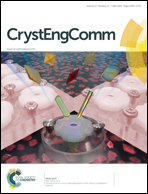H2Ti5O11·H2O nanorod arrays formed on a Ti surface via a hybrid technique of microarc oxidation and chemical treatment†
Abstract
H2Ti5O11·H2O nanorod arrays deposited on a titanium (Ti) surface have been fabricated via a hybrid technique of microarc oxidation (MAO) and chemical treatment. After the MAO treatment, an amorphous phase composed porous coating containing Ca, P, Si and Na elements was formed on the Ti surface. At the beginning of the chemical treatment, the elements of Ca, P, Si and Ti dissolved from the MAO coating into the solution. With a prolonged treatment time, nanorod arrays with a long aspect ratio were formed on the coating surface instead of the porous surface. The results revealed that the formed nanorods on the Ti surface were H2Ti5O11·H2O with the growth direction of [010]. This as-prepared Ti plate with a nanorod array surface exhibits a super-hydrophilic property, an excellent apatite-inducing ability and photocatalytic properties due to the existence of OH groups in the atomic structure of H2Ti5O11·H2O. The incorporated elements of Ca, P, Si and Na, and the corrosive attack of OH groups are the two factors for the formation of H2Ti5O11·H2O. The long and thin nature of the nanorods is attributed to the anisotropy of the atomic structure of H2Ti5O11·H2O with the lowest strain energy along the [010] direction based on the solid phase transformation.


 Please wait while we load your content...
Please wait while we load your content...